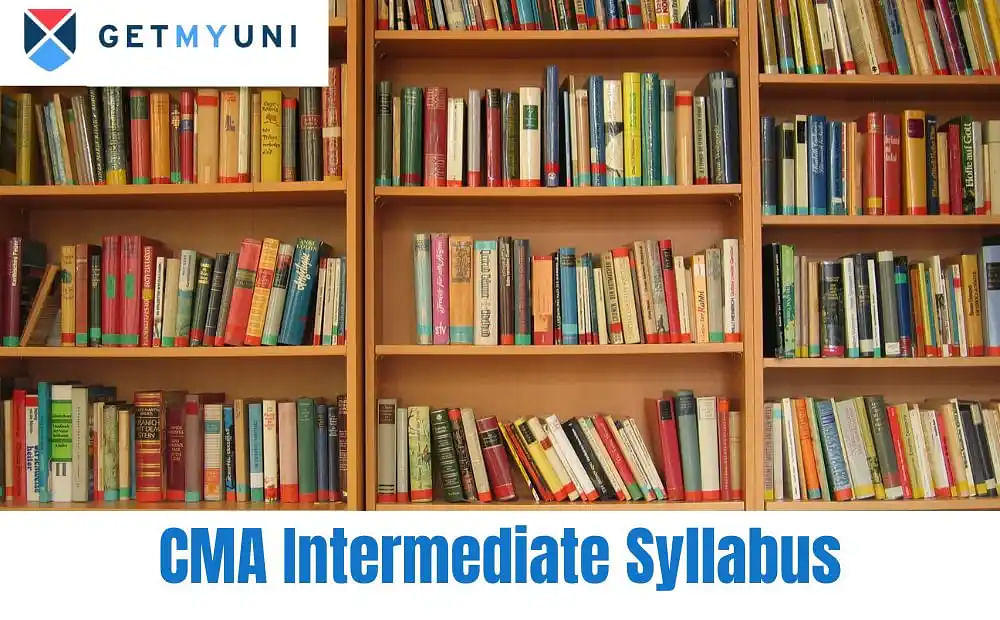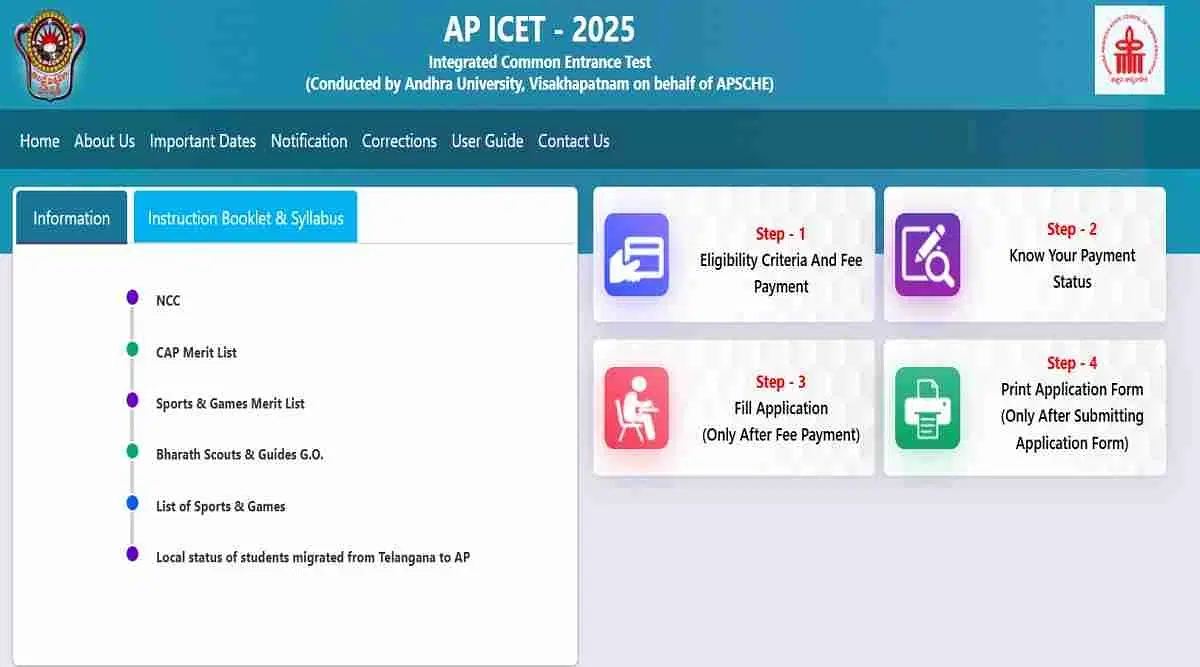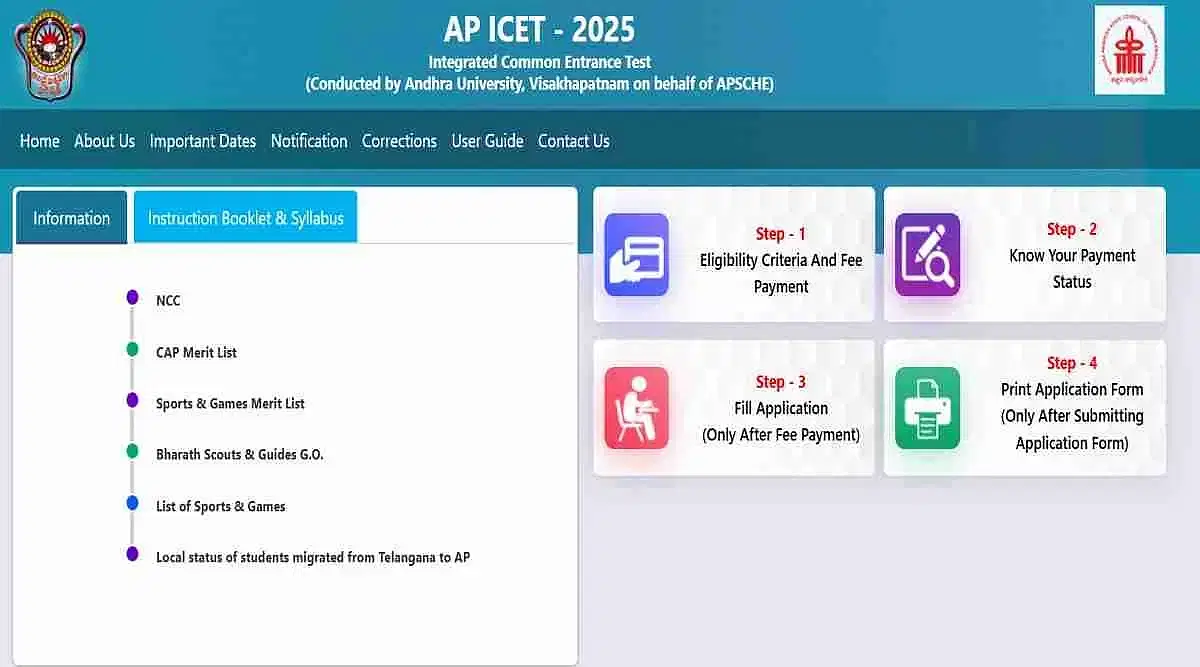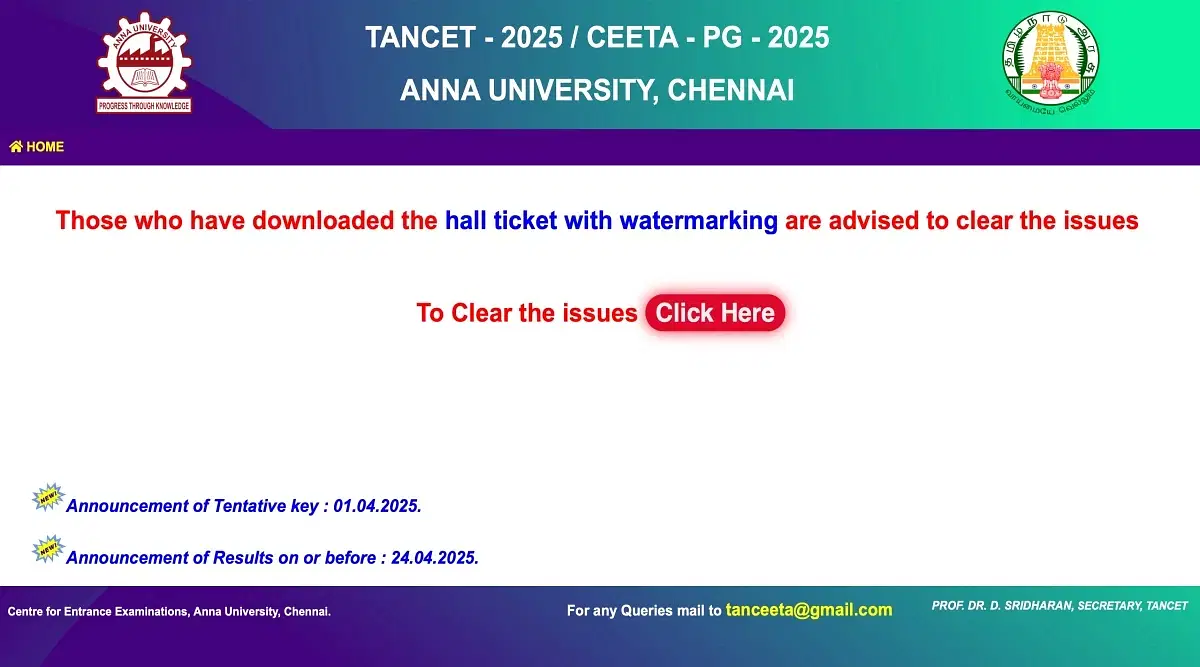CMA final syllabus 2023, published by ICMAI, is broadly divided into Group 3 and Group 4. Further, candidates need to appear for 8 papers in total.
Table of Contents
CMA final syllabus 2023 mainly consists of two groups- Group 3 and Group 4. Group 3 includes 4 papers, and Group 4 involves 3 papers. Further, candidates are required to choose 1 from 3 elective papers during final course enrollment.
The CMA final new syllabus 2023 was released by the Institute of Cost and Management Accountants of India (ICMAI) in the year 2022.
CMA Final Syllabus 2023 PDF
Students can find below the downloadable CMA final syllabus PDF links for each paper of Group 3 and Group 4, along with the elective papers.
| Papers | PDF Links |
| P13: Corporate and Economic Laws | Download |
| P14: Strategic Financial Management | Download |
| P15: Direct Tax Laws and International Taxation | Download |
| P16: Strategic Cost Management | Download |
| P17: Cost and Management Audit | Download |
| P18: Corporate Financial Reporting | Download |
| P19: Indirect Tax Laws and Practice | Download |
| P20A: Strategic Performance Management and Business Valuation | Download |
| P20B: Risk Management in Banking and Insurance | Download |
| P20C: Entrepreneurship and Startup | Download |
Also Check: CMA Final Study Material 2023
CMA Final Syllabus 2023: Details
Group 3 of the CMA final syllabus 2023 covers Papers 13, 14, 15, and 16. While papers 17, 18, and 19 are covered under Group 4. The complete CMA final syllabus for December 2023 is provided below for the convenience of students.
Paper 13: Corporate and Economic Laws
The section-wise modules and topics involved in Paper 13 of the CMA final 2023 syllabus are listed below.
Section A: Corporate Laws
- The Companies Act, 2013
- Company Formation and Conversion
- Investment and Loans
- Dividends
- Accounts and Audit
- Board of Directors and Key Managerial Personnel
- Board Meetings and Procedures
- Inspection, Inquiry and Investigation
- Compromises, Arrangements and Amalgamations
- Prevention of Oppression and Mismanagement
- Insolvency and Bankruptcy Code, 2016
- Definitions
- Corporate Insolvency Resolution Process
- Liquidation of a Corporate Person
- Personal Insolvency
- Corporate Governance, Social Responsibility and Sustainability
- Corporate Governance Concepts and Issues
- Corporate Governance Practices/Codes in India
- Corporate Governance in Family Business
- Corporate Social Responsibility – Nature of Activities, Evaluation of CSR Projects
- Sustainability Management
- SEBI Regulations
- Raising finance from capital markets –IPO
- Insider Trading
- Takeover Code
- The Competition Act, 2002
- Competition – Meaning, Objectives, Extent and Applicability
- Competition Commission of India
- Foreign Exchange Management Act, 1999
- Salient Features of Foreign Exchange Management Act (FEMA)
- Foreign Direct Investment in India (FDI) – Master Directions on FDI
- External Commercial Borrowings, Trade Credit and Structured Obligations – Master Directions
- Liberalized Remittance Scheme (LRS) – Master Directions
Section B: Economic Laws and Regulations
- Laws and Regulations related to Banking Sector
- The Banking Regulation Act, 1949
- Role of Reserve Bank of India
- The Securitization and Reconstruction of Financial Assets and Enforcement of Security
- Interest Act, 2002
- Laws and Regulations related to Insurance Sector
- The Insurance Act, 1938
- The Insurance Regulatory and Development Authority Act, 1999
- Specific Legal Provisions related to MSME Sector
- Definition of MSME
- Rights available to MSME, Measures for promotion of MSME under MSMED Act, 2006
- Laws and Regulations related to Cyber Security and Data Privacy
- Information Technology Act, 2000 and Rules framed there under, Sensitive Personal Data rules
- Basic Principles of Data Privacy, Data Privacy and Business Intelligence
- Cyber Crime / Cyber Frauds – Meaning, Remedies and Penalties
- Laws and Regulations related to Anti-Money Laundering
- The Prevention of Money Laundering Act, 2002
- The Prevention of Money Laundering (Maintenance of Records) Rules, 2005
Also Check: CMA Exam Pattern 2023
Paper 14: Strategic Financial Management
Paper 14 of the CMA final syllabus 2023 contains 5 sections- A, B, C, D, and E. The entire list of modules and topics can be checked below.
Section A: Investment Decisions
- Investment Decisions, Project Planning and Control
- Measuring Cash Flows, Discounted Cash Flow Technique for Project Evaluation
- NPV and IRR - Conflict and Resolution, The Modified Internal Rate of Return (MIRR)
- Comparing Projects with Unequal Lives, The Concept of Abandonment Value, Modified Accelerated Cost Recovery System (MACRS)
- Inflation Adjusted Cash Flow Forecasting in Capital Budgeting
- Capital Rationing for Divisible and Non – divisible Projects (with Application of Integer Programming)
- Social Cost Benefit Analysis
- Evaluation of Risky Proposals for Investment Decisions
- Risk Analysis in Capital Budgeting - Certainty Equivalent Approach, Risk Adjusted
- Discount Rate, Expected NPV, Standard Deviation of NPV and Use of Normal Distribution,
- Decision Tree Analysis, Options in Capital Budgeting
- Sensitivity Analysis
- Scenario Analysis
- Monte Carlo Simulation
- Leasing Decisions
- Lease Financing – Evaluation of Lease vs. Buy Options
- Break-Even Lease Rental Determination and Implicit Rate
- Cross Border Leasing, Sale and Lease Back
- Securitization
- Definition and Concept and Benefits of Securitization
- Participants in Securitization
- Mechanism and Problems of Securitization
- Securitization Instruments
Section B: Security Analysis & Portfolio Management
- Introduction
- Fundamental Analysis
- Technical Analysis
- Equity and Bond Valuation and Evaluation of Performance
- Equity Valuation - Discounted Cash Flow Based Valuation, Relative Valuation using Multiples and Weights
- Bond Valuation - Prices & Yields
- Mutual Funds
- Meaning, Advantages and Disadvantages, Structure and Types
- Regulations
- Computation of NAV
- Evaluation of Performance and Movements in Security Values and NAVs of Mutual Funds for Investment Decisions: Perspective of AUM Managers and Individual Investors
ETF, REIT, InvIT
- Portfolio Theory and Practice
- Portfolio Return and Risk, Systematic and Unsystematic Risk, Diversification strategies
- Optimal Portfolio, Efficient Frontier, Capital Market Line
- Principles of Asset Allocation, Active and Passive Asset Allocation
- Asset Pricing Theories
- Single Factor and Multifactor Asset Pricing Theories: CAPM and APT
- Concepts and Applications (including Levered Beta and Unlevered Beta)
- Portfolio Performance Evaluation and Portfolio Revision
- Conventional Performance Evaluation
- Market Timing and Style Analysis
- Efficient Market Hypothesis
- Definition
- Forms of Market Efficiency
- Implications
Section C: Financial Risk Management
- Risks in Financial Market
- Financial Derivatives – Instruments for Risk Management
- Introduction to Financial Derivatives
- Forward and Futures – Meaning and Difference, Pricing, Stock Futures, Index based
- Futures, Hedging through Futures
- Options
- Interest Rate Derivatives – Forward Rate Agreement, Interest Rate Futures and Options, Caps, Floors and Collars
Section D: International Financial Management
- The International Financial Environment
- International Financial Institutions and Markets
- Sources of Foreign Currency
- Foreign Exchange Market
- Introduction – Structure of Foreign Exchange Market
- Foreign Exchange Rate – Meaning, Determinants, Equilibrium Exchange Rate, Exchange Rate Quotations – Meaning, Direct vs. Indirect Quote, American vs. European Quote, Bid-Ask Rate and Spread, Cross Rates
- Segments of Foreign Exchange Market – Spot Market (including two and three-point Arbitrage), Forward Market
- Foreign Currency Derivatives
- Parity Relationships
- Foreign Exchange Risk Management
- Transaction Exposure
- Translation Exposure
- Operating Exposure
Section E: Digital Finance
- Digital Finance
- Meaning, Traditional Finance vs. Digital Finance
- Digital Finance Ecosystem
- Regulation and Governance in a Digital Finance Environment
Paper 15: Direct Tax Laws and International Taxation
There are 2 sections involved in the Paper 15 of the CMA final syllabus 2023. Further, various topics and sub-topics are covered in the syllabus of CMA final.
Section A: Direct Tax Laws
- Assessment of Income and Computation of Tax Liability of Various Entities
- Individual including Non-resident
- Company
- Trust
- Mutual Association
- Tax Management, Return and Assessment Procedure
- Return of Income
- Assessment Procedure including Dispute Resolution Process
- Interest and Fees
- Survey, Search and Seizure
- Collection, Recovery and Refund of Tax
- Grievance Redressal
- Appeal
- Rectification
- Revision
- Settlement Commission
- Advance Ruling
- Penalties and Prosecutions
- Business Restructuring
- Amalgamation
- Demerger
- Slump Sale
- Conversion of Sole Proprietary Business to Company
- Conversion of Firm into Company
- Conversion of Private Limited Company/Unlisted Public Company into LLP
- Different Aspects of Tax Planning
- CBDT and Other Authorities
- E-commerce Transaction and Liability in Special Cases
- Income Computation and Disclosure Standards (ICDS)
- Black Money Act, 2015
- Introduction to Black Money Act
- Highlights of Black Money Act
- Case Study
Section B: International Taxation
- Double Taxation and Avoidance Agreements (DTAA) [Sec.90. 90A and 91]
- Types of DTAA
- Models of DTAAs (OECD and UN)
- Interlink of DTAAs with Section 90 of Income Tax Act, 1961
- Overview of Articles in DTAAs
- Transfer Pricing
- Transfer Pricing including Specified Domestic Transactions
- Determination of Arm’s Length Price
- Advance Pricing Agreement- Concept and Application
- Safe Harbour Rules, Thin Capitalisation and Secondary Adjustment
- GAAR
Also Check: CMA Pass Percentage 2023
Paper 16: Strategic Cost Management
Paper 16 is the final paper that is covered under Group 3. Students can find below the detailed list of topics involved in this paper.
Section A: Strategic Cost Management for Decision Making
- Introduction to Strategic Cost Management
- Concepts of Strategic Cost Management in Different Stages of Value Chain
- Cost Control and Cost Reduction – Contemporary Techniques
- Value Chain Analysis and Value Engineering - Business Process Re-engineering
- Supply Chain Management
- Quality Cost Management
- Managing Quality in Competitive Environment
- Cost of Quality
- Total Quality Management
- Lean Accounting
- Six Sigma
- Decision Making Techniques
- Decisions involving Alternative Choices
- Pricing Decisions and Strategies
- Transfer Pricing
- Relevant Cost Analysis
- Target Costing
- Product Life Cycle Costing
- Asset Life Cycle Costing
- Decision Making using Probability
- Activity Based Management and Just in Time (JIT)
- Decisions involving Alternative Choices
- Pricing Decisions and Strategies
- Transfer Pricing
- Relevant Cost Analysis
- Target Costing
- Product Life Cycle Costing
- Asset Life Cycle Costing
- Decision-Making using Probability
- Evaluating Performance
- Variance Analyses
- Uniform Costing and Inter-firm comparison
Section B: Quantitative Techniques in Decision Making
- Linear Programming
- Transportation
- Assignment
- Game Theory
- Simulation
- Network analysis – PERT, CPM
- Learning Curve
- Business Application of Maxima and Minima
- Business Forecasting Models – Time Series and Regression Analysis
- Introduction to Tools for Data Analytics
Also Check: CMA Exam Centres 2023
Paper 17: Cost and Management Audit
Candidates are required to study 4 major sections for Paper 17. Here are the names of modules and topics included.
Section A: Cost Audit
- Basics of Cost Audit
- Nature and Scope of Cost Audit
- Genesis of Cost Audit
- Objectives of Cost Audit
- Utility and Advantage of Cost Audit
- Cost Accounting Standards
- Companies (Cost Records and Audit) Rules, 2014 (as amended)
- Cost Auditor
- Definition
- Cost Auditor’s Eligibility, Qualifications, Disqualifications, Appointment, Resignation, Rotation, Remuneration, Removal, Rights and Duties, Liabilities
- Professional Ethics
- Duties of a Cost Auditor to Report Fraud – Section 143 of the Companies Act 2013
- Punishment for Fraud (Section 447 of the Companies Act, 2013)
- Punishment for False Statement (Section 448 of the Companies Act, 2013)
- Overview of Cost Accounting Standards and GACAP
- Cost Accounting Standards
- Guidance Notes on Cost Accounting Standards
- Generally Accepted Cost Accounting Principles (GACAP)
- Cost Auditing and Assurance Standards
- Cost Auditing Standards - Overview
- Cost Audit Programme
- Introduction
- Factors in Planning Cost Audit Assignment
- Cost Audit Programme
- Cost Audit Documentation, Audit Process and Execution
- Cost Audit Documentation
- Audit Process
- Practical Steps of Audit Process
- Preparation and Filing of Cost Audit Report
- Introduction
- Critical Elements of Cost Audit Report and Related Evidences (Physical and Digital)
- Qualified Audit Report
- Adverse Audit Report
- Filing of Cost Audit Report to MCA in XBRL Format (as per TAXONOMY)
Section B: Management Audit
- Basics of Management Audit
- Definition
- Nature and Scope
- Need for Management Audit and Reporting
- Audit of Management Process and Functions
- Establishing reliability of information
- Role of CMAs in Management Audit
- Management Reporting Issues and Analysis
- Introduction
- Performance Analysis
- Capacity Utilisation Analysis
- Productivity and Efficiency Analysis
- Utilities and Energy Efficiency Analysis
- Key Costs and Contribution Analysis
- Profitability Analysis
- Working Capital and Liquidity Management Analysis
- Manpower Analysis
- Other Areas Suggested to be covered in the Report on Performance Analysis
- Management Accounting Tools
- Management Audit in Different Functions
- Corporate Objectives and Culture
- Corporate Services Audit
- Corporate Development Audit
- Evaluation of Personnel Development
- Consumer Services Audit
- Audit of Environmental Pollution Control
- Audit of Energy and Utilities - Generation and Consumption
- Productivity Audit/ Efficiency Audit
- Propriety Audit
- Corporate Social Responsibility (CSR) Audit
- Social Cost – Benefit Analysis Audit
- Evaluation of Corporate Image
- Introduction
- Audit Checks of Different Managerial Functions
- Audit Checks of Various Corporate Divisions/Departments
- ESG Audit
- Information Systems Security Audit
- Overview
- Compliance and Security Framework
- Cyber Security and Cyber Forensics
- 4 IT Audit in Banking Sector
Section C: Internal Control, Internal Audit, Operational Audit and other Related Issues
- Internal Control and Internal Audit
- Internal Control-Concept
- Internal Control and the Auditor
- Internal Auditing – Evolution of the Profession
- Operational Audit and Internal Audit under Companies Act, 2013
- Introduction
- Preparation for an Audit
- Audit Engagement Letter
- Role of CMAs in Internal Audit, Operational Audit and Managers
- Internal Audit under Companies Act, 2013
- Internal Audit and Companies (Auditor’s Report) Order
- Internal Audit in Companies under manufacturing sector
- Audit of Different Service Organisations
- Audit of Hospitals
- Audit of Hotels
- Audit of Educational Institutions
- Audit of Co-operative Societies
- Audit of Self-Help Groups
- Audit of Non-Government Organisations (NGOs)
- Audit of Local Bodies
- Audit of Government Expenditure
- Propriety Audit in the context of Government Audit
- Audit of Commercial Accounts
Section D: Forensic Audit and Anti-Money Laundering
- Forensic Audit
- Introduction to Forensic Audit
- Fraud Risk Management
- Financial Forensics and Forensic Audit Techniques
- Ethical Considerations and Code of Conduct in Forensic Audit
- Professional Opportunities
- Anti-Money Laundering
- International Standards on Combating Money Laundering and the Financing of Terrorism & Proliferation
- Guidance for a Risk-Based Approach for the Accounting Profession
Also Check: CMA Exam Reference Books 2023
Paper 18: Corporate Financial Reporting
Here is the comprehensive list of topics that must be prepared by aspirants for Paper 18 of the CMA final syllabus 2023.
Section A: Indian Accounting Standards
- Specific Accounting Standards
- Accounting Policies, Changes in Accounting Estimates and Errors (Ind AS 8)
- Income Taxes (Ind AS 12)
- Property, Plant and Equipment (Ind AS 16)
- Leases (Ind AS 116)
- The Effects of Changes in Foreign Exchange Rates (Ind AS 21)
- Borrowing Costs (Ind AS 23)
- Impairment of Assets (Ind AS 36)
- Intangible Assets (Ind AS 38)
- Share based Payment (Ind AS 102)
- Operating Segments (Ind AS 108)
- Fair Value Measurement (Ind AS 113)
- Revenue from Contracts with Customers (Ind AS 115)
Section B: Valuation of Shares, Accounting and Reporting of Financial Instruments and NBFCs
- Valuation of Shares (including Determination of Goodwill, Post-valuation of Tangible and Intangible Assets)
- Accounting of Financial Instruments
- NBFCs – Provisioning Norms, Accounting and Reporting
Section C: Accounting for Business Combination & Restructuring (in compliance with IND ASs)
- Accounting for Business Combination and Restructuring
- Introduction
- Accounting for Business Combination (Basic Level) with Simple Examples
- Absorptions, Amalgamations, External Reconstruction
- Detailed Discussion on Business Combination
- A Business Combination Achieved in Stages
- Reverse Acquisition
- Purchase of Shares from/Sale to Non-controlling Interest not Resulting in Loss of Control of the Acquirer
- Sale of Holding Resulting in Loss of Control of the Acquirer over the Acquiree
- Business Combination under Common Control (Appendix C of Ind AS 103)
- Disclosures
- Difference between Ind AS 103 and AS 14.
- Internal Reconstruction (Capital Reduction)
Section D: Consolidated Financial Statements and Separate Financial Statements (in compliance with IND ASs)
- Consolidated Financial Statements and Separate Financial Statements
- Introduction to Consolidation
- Concept of Significant Influence, Joint Control and Control as per Ind AS
- Consolidation Procedure for Investment in Associates, Joint Ventures and Subsidiaries
- Measurement of Fair Value of Net Assets, Non-controlling Interest, Goodwill/ Gain on
Bargain Purchase, Consolidated Other Equity (including Measurement of Investments under Equity Method) - Accounting and Reporting in Consolidated Financial Statements and in Separate Financial Statements at Acquisition Date - Introductory Examples
- Consolidated Financial Statements and Separate Financial Statements at Subsequent Reporting Date - Introductory Examples
- Consolidated and Separate Financial Statements of Group Entities - Advanced Level
- Discussion and Examples (including Inter-company Investments, Chain Holding, Crossholding and Other Relevant Matters)
- Accounting and Reporting of Joint Operation
- Disclosures
Section E: Recent Development in Financial Reporting
- Recent Developments in Financial Reporting
- 4P Bottom Line Reporting
- Sustainability Reporting and Global Reporting Initiative
- Business Responsibility and Sustainability Report
- Integrated Reporting
- Corporate Social Responsibility Reporting in India
- Environmental, Social and Governance (ESG)
- Human Resource Reporting
- Value Added Statement
- Economic Value Added and Market Value Added
- Reporting through XBRL (eXtensible Business Reporting Language)
- Quarterly Earnings Call Management
Section F: Government Accounting In India
- Government Accounting in India
- General Principles and Comparison with Commercial Accounting
- Role of Comptroller and Auditor General of India
- Role of Public Accounts Committee, Review of Accounts
- Government Accounting Standards Issued by Government Accounting Standards Advisory Board (GASAB)
- Government Accounting and Reporting
Paper 19: Indirect Tax Laws and Practice
The paper 19 of the CMA final syllabus 2023 comprises two main sections: A and B. Students must go through the list below to get know the topics to be covered.
Section A: Goods and Service Tax Act & Rules
- Supply under GST - A Refresh
- Introduction
- Case Studies and Illustrations on Supply - Taxable, Non-taxable, Exempted, Deemed Supplies, Reverse Charge
- Notifications on Exempted Supplies
- Important Circulars covering Clarifications on Supply
- Analysis of Key Advance Rulings
- Time of Supply (Advanced)
- Introduction
- Domestic Transactions including Reverse Charge
- International Transactions including Reverse Charge
- Case Studies / Analysis of Advance Rulings
- Place of Supply
- Supplies in Territorial Waters
- Detailed discussion on Place of Supply Provisions
- Place of Supply- OIDAR Services
- Case Studies and Illustrations on Place of Supply
- Valuation (Advanced)
- Introduction
- Related Party Transactions
- Distinct Person Transactions
- Specific Valuation Rules
- Case Studies and Illustrations on Valuation
- Key Advance Rulings
- Related Party Transactions
- Distinct Person Transactions
- Specific Valuation Rules
- Case Studies and Illustrations on Valuation
- Key Advance Rulings
- Input Tax Credit (Advanced)
- Introduction
- Specific Provisions on Input Tax Credit
- Case Studies and Illustrations on Input Tax Credit including Job Work, Input Service Distributor
- Zero Rated Supplies and Deemed Exports
- TDS & TCS under GST
- E-way Bill
- GST Refunds - Inverted Duty Structure and Zero Rated Supplies
- GST Returns
- Introduction
- Specific Provisions - Monthly Returns, Matching, Reversal and Reclaim of Input Tax Credit
- Annual Return, Final Return
- Penal Provisions for Return Filing
- Accounts and Records
- GST Annual Return and GST Audit Return
- Key Points for GST Annual Return and GST Audit
- Approach for GST Audit- Audit Plan, Checklists, Methodology, Management Representations, Reconciliations
- Case Studies and Illustrations
- Transition to GST (Transitional Provisions)
- Dispute Resolution Mechanism under GST
- Demands
- Assessment and Appeals
- Advance Ruling
- Offences and Penalties
- Inspection, Search, Seizure, Arrest and Prosecution
- Anti-profiteering
- Provisions
- Key Rulings
- Walkthrough of GSTN Portal
Section B: Customs Act and Rules
- Valuation and Related Party Transactions
- Valuation of Imported and Exported Goods
- Customs Procedures - Baggage & Courier / Post
- Provision regarding Baggage
- Manufacture in Bond
- Duty Drawback
- Customs (Import of Goods at Concessional Rate of Duty) Rules, 2017
- Remission of Duties
- Refund
- Trade Facilitation Measures
- Export Promotion Schemes under Foreign Trade Policy
- Merchandise Exports from India Scheme (MEIS)
- Service Exports from India Scheme (SEIS)
- Advance Authorization Scheme
- Duty Free Import Authorization (DFIA) Scheme
- Export Promotion Capital Goods Scheme (EPCG)
- New Scheme: RODTEP
- EOU, EHTP, STP & BTP Schemes
- Deemed Exports
- Special Economic Zone Scheme (with Amended SEZ Rules)
Paper 20A: Strategic Performance Management and Business Valuation
One of the 3 elective papers- 20A, 20B, 20C must be selected by the aspirants appearing for Group 3 and Group 4 CMA final examination. Here we have provided the CMA final syllabus 2023 for Paper A.
Section A: Strategic Performance Management
- Introduction to Performance Management
- Performance, Productivity and Efficiency
- Financial Performance Analysis
- Procurement to Pay and Vendor Relationship Management
- Supply Chain Management (SCM)
- Reverse Mapping of Business Strategies from Market Place using Data Analytics
- Order to Cash and Customer Relationship Management (CRM)
- Customer Profitability Analysis
- Improvement of Corporate Credit Rating Score
- Performance Measurement, Evaluation and Improvement Tools
- Balanced Score Card
- Du-Pont Analysis and RONA Model
- Bench marking & Bench Trending
- Six Sigma and Lean Management
- Statistical Quality Control (SQC)
- Plan-Do-Check-Action (PDCA)
- Management Information System in a Digital Environment
- Total Productive Maintenance
- Total Quality Management
- Data Envelopment Analysis
- Economic Efficiency of the Firm – Performance Analysis
- Economic Performance Indicator
- Profit Optimization under different Market Structure
- Market Factors affecting Pricing Decisions
- Enterprise Risk Management
- Risk Management
- Corporate Risk Management
- Corporate Failure
Section B: Business Valuation
- Fundamentals of Business Valuation
- Purpose of Business Valuation
- Valuation Premise
- Valuation Approaches
- Fundamentals of Valuation – Risk and Return
- Financial Statement Analysis
- Market Value and Enterprise Value
- Laws and Compliance in Business Valuation
- Salient features of the Insolvency and Bankruptcy Code, 2016
- The Companies Act, 2013: Section 192(2), 230(1), (2), (3), 231, 232, 247, 281(1)
- Salient features of the Companies (Registered Valuers and Valuation) Rules, 2017
- Salient Features of the SARFAESI Act, 2002 on Valuation
- Valuation Standards (IVSC)
- Business Valuation Methods and Approaches
- Discounted Cash Flow Analysis (DCF), Comparable Transactions Method, Comparable
- Market Multiples Method, Market Valuation, Economic Value Added Approach, Free Cash
- Flow to Equity, Dividend Discount Model, Net Asset Valuation, Relative Valuation
- Earnings Multiples
- Book Value Multiples
- Revenue and Sector Specific Multiples
- Valuation of Assets and Liabilities
- Valuation of Plant & Machinery
- Valuation of Inventory
- Valuation of Investments – Shares and Bonds/Debentures
- Valuation of Intangibles – Copy Rights, Goodwill, Brand
- Valuation of Human Resources
- Valuation of Real Estate
- Value Added, Economic Value Added, Market Value Added
- Valuation of Liabilities
- Valuation in Mergers and Acquisitions
- Acquisition Pricing
- Acquisition Outcome
- Financial Modelling
Paper 20B: Risk Management in Banking and Insurance
Another elective paper involved in the CMA final 2023 syllabus is Paper 20B which deals with various topics from Risk Management in Banking and Insurance.
Section A: Risk Management In Banking
- Introduction to Risk Management
- Concept of Risk
- Risk vs. Uncertainty
- Types of Risk
- Risk Management – Concept and Approaches
- Risk Management Strategies
- Interest Rate Risk and Market Risk
- Interest Rate Risk Management
- Market Risk Management
- Credit Risk and Liquidity Risk
- Credit Risk Management
- Management of Non-Performing Assets (NPAs)
- Liquidity Risk Management
- Sovereign Risk and Insolvency Risk
- Sovereign Risk Events
- Debt Repudiation versus Debt Rescheduling
- Evaluation of Sovereign Risk
- Mechanisms for dealing with Sovereign Risk Exposures
- Insolvency Risk Analysis through Capital Adequacy Ratios
- Operational Risk and Off-Balance Sheet Risk
- Operational Risk – Identification and Assessment, Basel Norms
- Monitoring and Mitigating Operational Risk
- Off-Balance Sheet Risk Exposures
- Loan Commitments
- Commercial Letters of Credit, Letters of Undertaking and Bank Guarantee
- Derivatives
- Deposit Insurance
- Nature of Off-Balance Sheet Risks
Section B: Risk Management In Insurance
- Introduction to Insurance Business
- Definition, Concept and Features of Insurance
- Principles of Insurance
- Role of Insurance towards Economic Growth
- Difference between Insurance Companies and other Financial Institutions
- Insurance Regulatory and Development Authority (IRDA) – Objectives, Statutory Powers and Functions of IRDA
- Insurance Intermediaries, General Insurance, Health Insurance and Life Insurance
- Insurance Intermediaries
- General Insurance
- Concept and Types of Health Insurance Policies
- Structure and Type of Re-insurance
- Life Insurance
- Managing Risk in Insurance Business
- Concept of Risk in Insurance Business
- Factors affecting Risk Profile of Insurers
- Kinds of Risks in Insurance – Portfolio Risk, Solvency Risk, Marketing Risk, Market Risk, Operational Risk and Other Risks
- Risk-based Capital, Types of Risk-based Capital – Current Risks, Special Risks, Non-technical Risks
- Risk Management Process in Insurance
- Role of an Actuary in Insurance Business
Paper 20C: Entrepreneurship and Startup
The Paper C of CMA final syllabus 2023 includes all aspects and topics related to Entrepreneurship and Startup. Here are the topics covered.
Section A: Entrepreneurial Skill Sets
- Entrepreneurial Skill Sets
- Building the Entrepreneurial Quotient
- Entrepreneurial Psychology, Driving Forces and Characteristics
- Entrepreneurial Discipline with Practice, Patience and Perseverance (3Ps)
- Identifying and Meeting the Gaps in Resources at Optimised Cost
- Capital Structuring, Resource Mobilization and Management
- New Age Marketing and After Sales Services
- Using IT and 8 Deep Technologies
- Strategies for Disruption
- Legal and Regulatory Compliance
Section B: The Entrepreneurial Eco-system
- The Entrepreneurial Eco-system
- Macroeconomic Environment and Emerging Dimensions of Business Ecosystems
- Formation and Incorporation of a Legal Entity
- Legal and Intellectual Property Rights
- Procurement to Pay
- Order to Cash
- Transaction to Reporting
- Working Capital Management
- Market Dynamics
- Government Policies, Subsidies, Incentives, Tax Laws
- Trends in Entrepreneurship
Section C: Idea to Action
- Idea to Action
- Monetizing Ideas
- Bootstrapping
- Preparation of Project Report
- Funding Options for Start-up, including Crowd Funding
- Using Data Analytics to Advantage
- Building a Sustainable Revenue Model and Periodical Business Plan
- Launching Sustainable Impact Initiatives
- From Start up to MNC
Section D: Value Addition
- Value Addition
- Process of Innovation
- Design Thinking
- Lean Start-Up & Customer Validation
- Generating Market Traction
- Positioning and Packaging
- Start-up Models
Section E: Scale up
- Scalability, Scaling up and Stabilisation of Sustainable Business
- Business Scalability –Validation and Roadmap
- Preparation of Pitching Document and giving Elevator Pitches
- Funding Strategies and Funding Series including crowd funding
- Start-up Valuation – Pre-money, Milestone and Investors’ Exit Point
- Scaling up and Stabilisation of Business
- Sustainability Management
- Exit Strategies of Fund Houses
- Gathering Critical Mass through Mergers & Acquisitions
- Negotiations at each Milestone
Section F: Risk Management Strategies
- Risk Management Strategies
- Predicting, Calculating and Mitigating Enterprise Risks
- Application of COSO Framework for Risk-Enabled Performance Management
- Predicting, Calculating and Overcoming Financial Risks
- Project Monitoring and Controlling
- Increasing Coping Mechanisms and Risk Mitigation
- Establishing Internal Checks and Balances as a Process
- Transformation from Risk Managing to Risks Enabled Organisation
- Start-up Audit
- Bouncing Back from Failures
Section G: Leadership
- Leadership
- Leading Mission Driven Ventures and Organisations
- Business Ethics and Best Practices
- Forecasting and Planning - Building Capabilities to see Deeper, Wider and Faster
- Developing Mission, Vision and Goals
- Learning smart ways to create Competitive Advantage
- Learn to deal with Ups and Downs and Lead Organisational Change
- Building a Motivated Team
- Designing Strategies to suit the Business Needs and Ecosystem
Section H: Types of New Age Business
- Types of New Age Business
- FinTech, EdTech, HealthCare, AgriTech, Defence, IT, Space, Robotics, Digital Transformation & VBA etc.
- Agropreneurship
- Women Entrepreneurship
- Family Run Business
- MSME
- Generation Transfer Transaction
- Social Entrepreneurship
- Emerging Markets
Also Check: CMA Previous Years Question Papers
CMA Final Syllabus 2023 Weightage
Along with knowing what to study, aspirants must have a sound understanding of the weightage of each topic present in the CMA final syllabus 2023.
The sectional weightage details for various papers in CMA final syllabus 2023 is shown below.
Section-Wise Weightage for Paper 13
Candidates can look into the section-wise marks distribution for Paper 13 of CMA final 2023 syllabus below.
| Section | Name of Module | Weightage |
| Section A: Corporate Laws | The Companies Act, 2013 | 40% |
| Insolvency and Bankruptcy Code, 2016 | 10% | |
| Corporate Governance and Social Responsibility and Sustainability | 10% | |
| Section B: Economic Laws and Regulations | SEBI Regulations | 10% |
| The Competition Act, 2002 | 5% | |
| Foreign Exchange Management Act, 1999 | 5% | |
| Laws and Regulations related to Banking Sector | 5% | |
| Laws and Regulations related to Insurance Sector | 5% | |
| Specific Legal Provisions related to MSME Sector | 5% | |
| Laws and Regulations related to Cyber Security and Data Privacy | 5% | |
| Laws and Regulations related to Anti-Money Laundering | 5% |
Also Check: How to Become a CMA?
Section-Wise Weightage for Paper 14
Refer to the following table to know the section-wise breakdown of marks for paper 14 of CMA syllabus final 2023.
| Section | Name of Module | Weightage |
| Section A: Investment Decisions | Investment Decisions, Project Planning and Control | 10% |
| Evaluation of Risky Proposal for Investment Decisions | 10% | |
| Leasing Decisions | 10% | |
| Securitization | 5% | |
| Section B: Security Analysis and Portfolio Management | Introduction | 5% |
| Equity and Bond Valuation and Evaluation of Performance | 15% | |
| Mutual Funds | ||
| Portfolio Theory and Practice | 15% | |
| Asset Pricing Theories | ||
| Portfolio Performance Evaluation and Portfolio Revision | ||
| Efficient Market Hypothesis | ||
| Section C: Financial Risk Management | Risks in Financial Market | 20% |
| Financial Derivatives - Instruments for Risk Management | ||
| Section D: International Financial Management | The International Financial Environment | 5% |
| Foreign Exchange Market | 10% | |
| Foreign Exchange Risk Management | ||
| Section E: Digital Finance | Digital Finance | 5% |
Section-Wise Weightage for Paper 15
The section-wise and module-wise weightage for paper 15 can be checked in the table shown as follows:
| Section | Name of Module | Weightage |
| Section A: Direct Tax Laws | Assessment of Income and Computation of Tax Liability of Various Entities | 60% |
| Tax Management, Return and Assessment Procedure | ||
| Grievance Redressal | ||
| Penalties and Prosecutions | ||
| Business Restructuring | ||
| Different Aspects of Tax Planning | ||
| CBDT and Other Authorities | ||
| E-commerce Transaction and Liability in Special Cases | ||
| Income Computation and Disclosure Standards (ICDS) | ||
| Black Money Act, 2015 | ||
| Case Study | ||
| Section B: International Taxation | Double Taxation and Avoidance Agreements (DTAA) [Sec.90. 90A and 91] | 40% |
| Transfer Pricing | ||
| GAAR |
Also Check: CMA Intermediate Syllabus
Section-Wise Weightage for Paper 16
The paper 16 of the CMA final 2023 syllabus includes the following section-wise marking scheme:
| Section | Name of Module | Weightage |
| Section A: Strategic Cost Management for Decision Making | Introduction to Strategic Cost Management | 5% |
| Quality Cost Management | 5% | |
| Decision Making Techniques | 25% | |
| Activity Based Management and Just in Time (JIT) | 10% | |
| Evaluating Performance | 15% | |
| Section B: Quantitative Techniques in Decision Making | Linear Programming | 15% |
| Transportation | ||
| Assignment | ||
| Game Theory | 15% | |
| Simulation | ||
| Network analysis – PERT, CPM | ||
| Learning Curve | ||
| Business Application of Maxima and Minima | 10% | |
| Business Forecasting Models – Time Series and Regression Analysis | ||
| Introduction to Tools for Data Analytics |
Section-Wise Weightage for Paper 17
There are 4 sections in paper 17 that are divided into several modules and involve the below-mentioned marking structure:
| Section | Name of Module | Weightage |
| Section A: Cost Audit | Basics of Cost Audit | 5% |
| Companies (Cost Records and Audit) Rules, 2014 (as amended) | 10% | |
| Cost Auditor | 10% | |
| Overview of Cost Accounting Standards and GACAP | 10% | |
| Cost Auditing and Assurance Standards | 5% | |
| Cost Audit Programme | 5% | |
| Cost Audit Documentation, Audit Process and Execution | 5% | |
| Preparation and Filing of Cost Audit Report | 5% | |
| Section B: Management Audit | Basics of Management Audit | 5% |
| Management Reporting Issues and Analysis | 5% | |
| Management Audit in Different Functions | 5% | |
| Evaluation of Corporate Image | 5% | |
| Information Systems Security Audit | 5% | |
| Section C: Internal Control, Internal Audit, Operational Audit and Other Related Issues | Internal Control and Internal Audit | 5% |
| Operational Audit and Internal Audit under Companies Act, 2013 | 5% | |
| Audit of Different Service Organisations | 5% | |
| Section D: Forensic Audit and Anti-Money Laundering | Forensic Audit | 5% |
| Anti-Money Laundering | 5% |
Also Check: CMA vs MBA
Section-Wise Weightage for Paper 18
Students must review the marking format for Paper 18 of CMA final syllabus 2023 through the table below.
| Section | Name of Module | Weightage |
| Section A: Indian Accounting Standards | Specific Accounting Standards | 25% |
| Section B: Valuation of Shares, Accounting and Reporting of Financial Instruments and NBFCs | Valuation of Shares (Including Determination of Goodwill, PostValuation of Tangible and Intangible Assets) | 15% |
| Accounting of Financial Instruments | ||
| NBFCs – Provisioning Norms, Accounting and Reporting | ||
| Section C: Accounting for Business Combination and Restructuring (in Compliance with Ind ASs) | Accounting for Business Combinations and Restructuring | 20% |
| Section D: Consolidated Financial Statements and Separate Financial Statements (in Compliance with Ind ASs) | Consolidated Financial Statements and Separate Financial Statements | 20% |
| Section E: Recent Developments in Financial Reporting | Recent Developments in Financial Reporting | 10% |
| Section F: Government Accounting in India | Government Accounting in India | 10% |
Section-Wise Weightage for Paper 19
In the table below, candidates can view the sectional weightage for paper 19, along with module-wise weightage.
| Section | Name of Module | Weightage |
| Section A: Goods and Services Tax Act & Rules | Supply under GST - A Refresh | 70% |
| Time of Supply (Advanced) | ||
| Place of Supply | ||
| Valuation (Advanced) | ||
| Input Tax Credit (Advanced) | ||
| Zero Rated Supplies and Deemed Exports | ||
| TDS & TCS under GST | ||
| E-way Bill | ||
| GST Refunds- Inverted Duty Structure and Zero-rated Supplies | ||
| GST Returns | ||
| Accounts and Records | ||
| GST Annual Return and GST Audit Return | ||
| Transition to GST (Transitional Provisions) | ||
| Dispute Resolution Mechanism under GST | ||
| Inspection, Search, Seizure, Arrest and Prosecution | ||
| Anti-profiteering | ||
| Walkthrough of GSTN Portal | ||
| Section B: Customs Act and Rules | Valuation and Related Party Transactions | 30% |
| Customs Procedures - Baggage & Courier/Post | ||
| Manufacture in Bond | ||
| Duty Drawback | ||
| Customs (Import of Goods at Concessional Rate of Duty) Rules, 2017 | ||
| Remission of Duties | ||
| Refund | ||
| Trade Facilitation Measures | ||
| Export Promotion Schemes under Foreign Trade Policy | ||
| Special Economic Zone Scheme (With Amended SEZ Rules) |
Also Check: CMA vs CA
Section-Wise Weightage for Paper 20A
The Paper 20A of CMA final 2023 syllabus involves the following sectional and module-wise weightages:
| Section | Name of Module | Weightage |
| Section A: Strategic Performance Management | Introduction to Performance Management | 10% |
| Performance Measurement, Evaluation and Improvement Tools | 15% | |
| Economic Efficiency of the Firm – Performance Analysis | 10% | |
| Enterprise Risk Management | 15% | |
| Section B: Business Valuation | Fundamentals of Business Valuation | 5% |
| Laws and Compliance in Business Valuation | 5% | |
| Business Valuation Methods and Approaches | 10% | |
| Valuation of Assets and Liabilities | 15% | |
| Valuation in Mergers and Acquisitions | 15% |
Section-Wise Weightage for Paper 20B
For the 20 B Elective Paper, candidates must note that the below-mentioned weightage percentage will apply for each of the sections.
| Section | Name of Module | Weightage |
| Section A: Risk Management in Banking | Introduction to Risk Management | 5% |
| Interest Rate Risk and Market Risk | 15% | |
| Credit Risk and Liquidity Risk | 15% | |
| Sovereign Risk and Insolvency Risk | 10% | |
| Operational Risk and Off-Balance Sheet Risk | 15% | |
| Section B: Risk Management in Insurance | Introduction to Insurance Business | 10% |
| Insurance Intermediaries, General Insurance, Health Insurance and Life Insurance | 15% | |
| Managing Risk in Insurance Business | 15% |
Also Check: CMA Rank List 2023
Section-Wise Weightage for Paper 20C
Here is the section-wise marking pattern that is followed by ICMAI for paper 20C and aspirants must take a note of the same.
| Section | Name of Module | Weightage |
| Section A: Entrepreneurial Skill Sets | Entrepreneurial Skill Sets | 15% |
| Section B: The Entrepreneurial Eco-system | The Entrepreneurial Eco-system | 15% |
| Section C: Idea to Action | Idea to Action | 15% |
| Section D: Value Addition | Value Addition | 15% |
| Section E: Scale up | Scalability, Scaling up and Stabilisation of Sustainable Business | 10% |
| Section F: Risk Management Strategies | Risk Management Strategies | 10% |
| Section G: Leadership | Leadership | 10% |
| Section H: Types of New Age Business | Types of New Age Business | 10% |
Steps to Download CMA Final Syllabus 2023
Aspirants can simply download the CMA final syllabus 2023 online by following the instructions mentioned as follows.
- Step 1: First, candidates must head to the ICMAI official portal: icmai.in
- Step 2: Then, on the homepage, they must visit the “Students” section and click on “Admission” option.
- Step 3: Here, they must click on the “Syllabus 2022” option.
- Step 4: The CMA final syllabus 2023 will be displayed and can be downloaded in a PDF format.
Also Check: CMA Direct Entry Eligibility
CMA Final 2023 Exam Pattern
The Institute of Cost and Management Accountants of India released the exam pattern for CMA final 2023 exam along with the syllabus. The test format is given below for students’ reference.
| Particulars | Details |
| Exam Conducting Authority | Institute of Cost Management Accountant of India (ICMAI) |
| Mode of Exam | Offline |
| Medium of Test | English |
| Nature of Questions | MCQ and descriptive |
| Total Marks | 100 |
| Total Papers | 8 |
| Exam Duration | 3 Hours |
| Negative Marking | No |
Study Material for CMA Final Syllabus 2023
Aspirants shall find the complete study material pertaining to the CMA final syllabus 2023 on the official portal of ICMAI.
All the relevant resources, including the best reference books for CMA final syllabus 2023, mock papers, previous years’ papers, etc., are available.
Here is how candidates can access the CMA final syllabus 2023 study material online.
- Candidates must go to icmai.in, the official website of ICMAI
- Then, they must navigate toward the 'Students' Connect Portal' and tap on it.
- A new page will appear wherein candidates will get the CMA final study material below the 'E-Academics Services' section.
- Next, the 'Click Here' option must be clicked.
- The study material for CMA final syllabus 2023 will open on the screen and can be downloaded successfully.
Also Check: CMA Exam Mock Tests 2023








































POST YOUR COMMENT